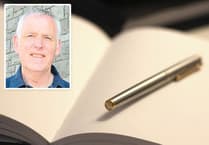As a simplistic endorsement, Patrick Loxdale’s chirpy assertions about nuclear energy take you back to the kind of hopelessly self-serving garbage put about in industry propaganda in the 1950s, when atomic power was in its ill-fated infancy.
“Nuclear-generated electricity,” Patrick tells us in his Right Field column, “is clean and green.”
The evidence is against him. Including in his specific backing for the establishment of small modular reactors (SMRs) at Trawsfynydd and Wylfa to enable production of medical radioisotopes, an initiative at the core of a Welsh government project which would see the creation of a public sector national laboratory for the supply of such radioisotopes, which are needed for the diagnosis and treatment of diseases including cancer.
Loxdale wants to give SMRs a clean bill of health in advance of any researched-based demonstration that such is justified. That’s bad enough, but en route he wants us to go along with his sweeping assertion about the utter desirability of all nuclear power – past and present. For any deniers of the proposition, this is a meltdown moment.
He is content to single out, solely, the tsunami-triggered Fukushima disaster, and seeks to reassure by reminding us that we live in a region of geological stability with no significant earthquakes or tsunamis.
All right, Patrick, we won’t mention Trawsfynydd and its persisting lake-loads of radioactive fish and radioactive lakeside mud, the repeated fires there in the 1990s, the leakages of radioactive aerosols.
We’ll agree to steer clear, too, of the catastrophic Windscale nuclear plant fire in 1957 which deposited plutonium over a swathe of England and Wales and caused multiple cancer cases. We’ll forget about the fire that burned for three days, and the radiation leak caused and estimated 240 cases of cancer, many of them fatal.
Best avoid, too, any reminder about the regular pipeline discharges into the Irish Sea of radioactive waste from Sellafield (the sanitised name for Windscale), which made that waterway the most radioactive in the world, to the enormous annoyance of the Irish government.
And Chernobyl? And its long-lasting caesium contamination of north Wales sheep-pastures? Better, Loxdale presumably thinks, to look the other way on that one, too, despite the devastation heaped on hill-farmers.
The 1986 disaster is widely believed to have caused the deaths of at least 4,000 people across Europe, with a further untold number of children born with abnormalities.
The explosion at the Ukrainian nuclear plant forced the evacuation of more than 100,000, and laid waste an area of 3,000 square miles that still remains uninhabitable.
Within weeks of the resulting fire, hill-farmers across north Wales were also dragged into the developing crisis.
Heavy rain in the April and May drenched higher ground with alarming quantities of radioactive caesium and iodine, and a blanket ban on the sale of all farm animals was imposed.
Similar amounts of rain fell on Ceredigion and Montgomeryshire, but disorganisation at Welsh Office level was such that only scant testing of farm produce and pasture was carried out.
As an aside, we could call up nuclear power’s economic record, which is worse than hopeless, turning once more, as a stark illustration, to Trawsfynydd, which was finally shut down in 1993 and, since 1995, has been undergoing a process of decommissioning forecast to take at least another 20 years to complete.
Though the top parts of the two reactor buildings are to be partially demolished to reduce their height, the steel reactor cores that housed the fuel rods remain too radioactive to be removed. The final clearance of the site isn’t scheduled to begin until 2071.
And so to SMRs, which can generate up to 300 megawatts, or about two-thirds less than traditional nuclear power reactors. They are claimed to be safer because of increased use of smart innovative technology and inherent safety features.
So how solid is the SMR safety case? The jury’s out.
In 2021, the intergovernmental Nuclear Energy Agency (NEA) established an expert group on SMRs “to handle safety challenges and develop a solid scientific basis which supports safety demonstration of the advanced and innovative technologies used for SMRs”.
But the NEA is clear that much research on safety remains to be done.
The Welsh Government, meanwhile, is brimming over with enthusiasm, insisting its proposed project will become essential for the diagnosis and treatment of a number of diseases, and that its north Wales facility would be a global centre of excellence in nuclear medicine, making Wales the leading location for medical radioisotope production in the UK, leading to the creation of highly skilled jobs over several decades.
But it’s time to slow down. The NEA’s reticence on safety means it’s necessary for the government - and Patrick Loxdale – to take a deep breath and, no doubt with difficulty, reserve judgment.





Comments
This article has no comments yet. Be the first to leave a comment.